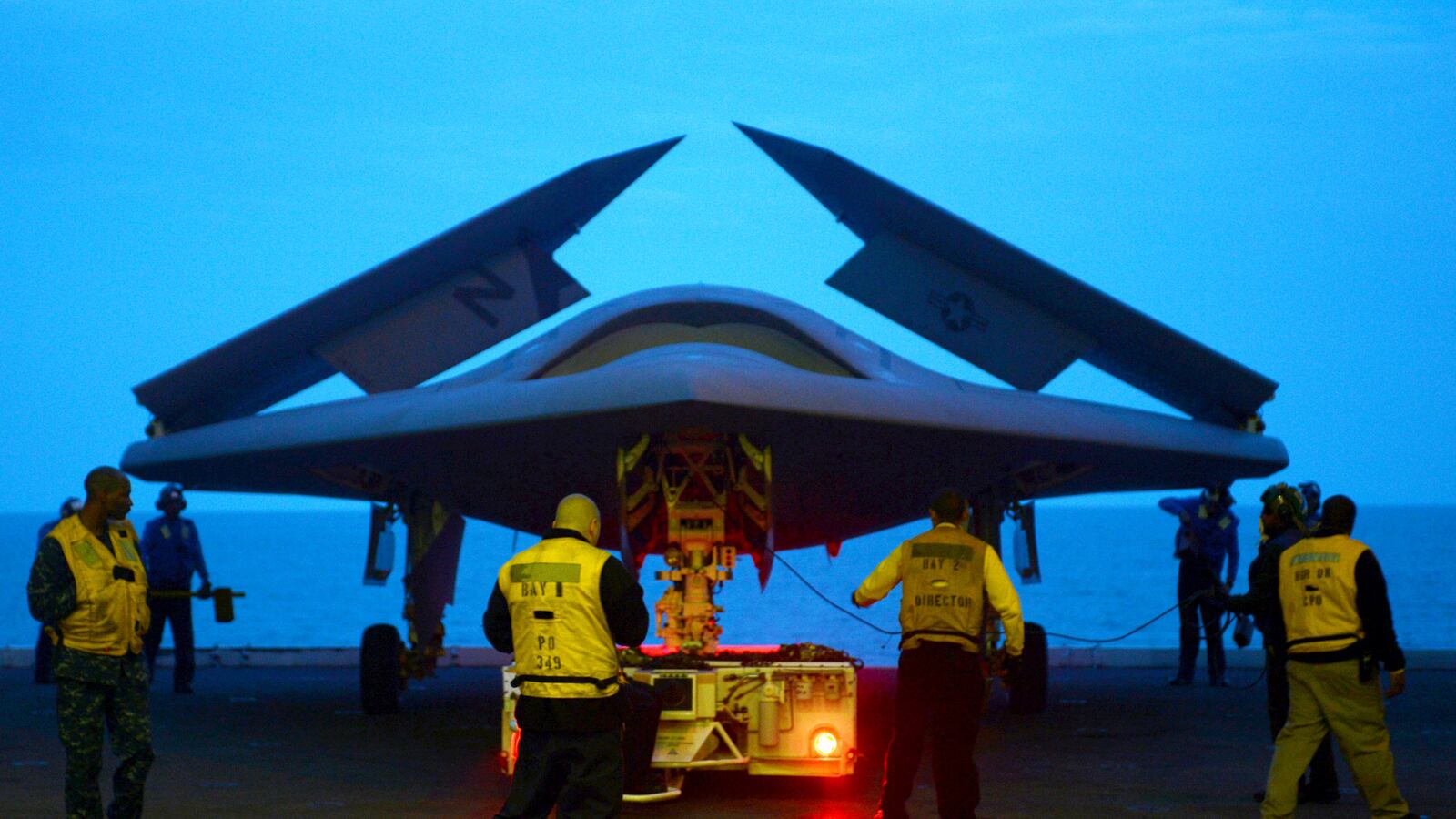The Predator drone has become the symbol for America’s unmanned war, zooming over the heads of low-tech foes like the Taliban. But the battles to come are likely to be against more sophisticated, better-equipped foes—especially with a newly-aggressive Russia on the march. And in those conflicts, the Predator would be all-but-useless. The drone is too easy for an advanced military to spot and shoot down.

That’s why the Pentagon—and about every country capable of building combat airplanes—is working on advanced, speedy, stealthy, next-gen drones.
The UK has recently disclosed the first flights of Taranis, the nation’s first custom-built stealthy unmanned aerial vehicle, or UAV; it’s designed with airstrikes in mind. France has its own equivalent, the Neuron. Russia, China, India and other major military-industrial powers all have their respective offerings, with more are being designed.
Meanwhile, the U.S. Navy is flying three X-47B demonstrators off its aircraft carriers, a major technical accomplishment. The X-47B, is stealthy and has weapons bays, and the Navy loves showing it off to reporters. Though it remains just a demonstrator, it serves to inform that the only big, competitive aircraft program is really at the moment, meant to deploy around 2020.
Four competitors have earned Navy development grants: Northrop, with a production version of its X-47B test bed; Lockheed, with an entry that looks an awful lot like its RQ-170 spy drone (more about that in a second); General Atomics, with a beefed-up, jet-powered Predator-like aircraft called Avenger; and Boeing, with a design it has shown in public but consistently refused to discuss.
Stealth, to varying degrees, has become the standard for new combat aircraft designs, and virtually every nation capable of building combat aircraft has, if not actual stealth drones, the intent to build some. The U.S. has been building stealthy planes since the early 1980s, even reaching the point of retiring the first-generation Lockheed Martin F-117 stealth fighter fleet (though two or three have been recently spotted in the air; the Air Force will not disclose why). The Lockheed F-22, America’s cutting-edge frontline fighter, is stealthy, as is the F-35 attack aircraft that will soon become the arsenal’s backbone.
The Predator and its larger cousin, the MQ-9 Reaper, are impressive aircraft, able to fly for over a full day carrying powerful cameras and electronic eavesdropping gear—and bombs and missiles should its distant operators in Nevada or New Mexico find a worthy target. They are often used to ‘‘stare’’ at the same person or spot for weeks on end, flying in shifts, circling slowly around 15,000 feet, almost invisible and inaudible to its targets on the ground. It is a fine aircraft for places like Afghanistan, Pakistan, Yemen, Somalia and Mali, where their targets essentially can’t see them and couldn’t really do anything if they did.
But Predators are vulnerable to even the most obsolete surface-to-air missiles or air-to-air fighter aircraft. They are almost as visible on radar as equivalent-sized civilian aircraft, they have none of the electronic or physical countermeasures found even on large military transports. They fly relatively low and slowly and would have trouble out-maneuvering a Cessna or WWII-era dogfighter, much less a modern fighter. As the U.S. turns away from Afghanistan and pivots towards more sophisticated opponents, the Predators and Reapers have little to offer—using them to threaten a relatively advanced nation like China or Russia would likely elicit more giggles than fear.
(Just look what happened when a Georgian drone when up against a Russian MiG-29 fighter in 2009:)
To compensate, UAVs need to become stealthy.
Officially, the only stealthy UAV in the U.S. arsenal is Lockheed’s RQ-170, first revealed by pictures taken at Kandahar Air Base, Afghanistan and publicly acknowledged only in 2009 (One crashed in Iran in 2011. The unofficial pictures from Kandahar and Iran are still the best available to the public, and details are closely held.) Despite the secrecy, RQ-170 does not outwardly appear to have the most cutting-edge stealth technology, and U.S. government sources quoted by the media following the crash said as much. But there are certainly unacknowledged programs flying quietly from airfields in Nevada, if not other locations. The world of classified aerospace is surprisingly large and well-funded—a large portion of the U.S. Air Force’s acquisition budget is classified—and stealth drones are a quasi-open secret to those who follow the industry. We certainly have them, but we don’t like to talk about it.
Most prominently, Aviation Week’s Amy Butler and Bill Sweetman wrote about one such secret aircraft, a large, stealthy UAV called the RQ-180. Built by Northrop Grumman, the aircraft is said to resemble a larger version of the unclassified X-47B (flown as a demonstrator for the Navy) and contain the means to conduct both reconnaissance and bombing runs. If Aviation Week is correct about its size, the RQ-180 is probably the largest stealthy UAV out there.
A second stealth drone was allegedly spotted in the skies above Texas on March 10. We know even less about this aircraft than the RQ-180, however.
Industry executives and engineers openly hint at other, smaller UAVs, built as one-offs or small handfuls, many of which are stealthy in one form or another. Looking at indications around the margins—coded lines in budget documents, new hangars visible by commercial satellite, even the symbology of military patches—can yield some interesting details, though they generally raise more questions than answers. For now, the stealth drones remain, well, hidden from plain sight.






